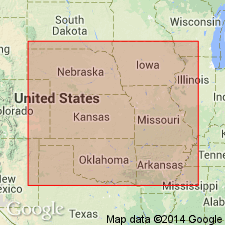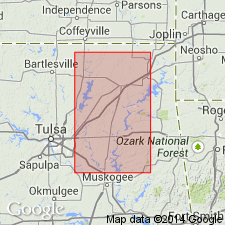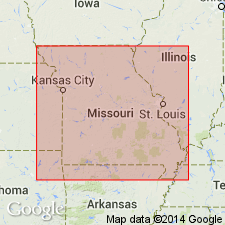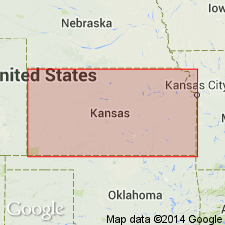
- Usage in publication:
-
- Dry Wood formation
- Modifications:
-
- Original reference
- AAPG geologic province:
-
- Cherokee basin
Summary:
Pg. 2748 (fig. 1). Dry Wood formation of Krebs group. Shown on northern Midcontinent composite stratigraphic section as Dry Wood (Drywood) formation. Includes Dry Wood coal at top. Underlies Bluejacket sandstone; overlies Rowe formation (new). Included in Krebs group. Age is Middle Pennsylvanian (Des Moines).
Source: US geologic names lexicon (USGS Bull. 1200, p. 1167).

- Usage in publication:
-
- Dry Wood coal cycle
- Modifications:
-
- Revised
- AAPG geologic province:
-
- Cherokee basin
Summary:
Pg. 6. Referred to as Dry Wood [Drywood] coal cycle in Savannah formation of Krebs group. Age is Middle Pennsylvanian (Des Moines).
Source: US geologic names lexicon (USGS Bull. 1200, p. 1167).

- Usage in publication:
-
- Drywood formation
- Modifications:
-
- Principal reference
- Dominant lithology:
-
- Shale
- Underclay
- Coal
- AAPG geologic province:
-
- Cherokee basin
Summary:
Pg. 14 (fig. 5), 18 (fig. 7), 20 (fig. 9), 35. Drywood formation of Krebs group. At type section, Drywood (Dry Wood) consists of basal black shale, underclay, lenticular sandy shale, and thin coal horizon. Thickness about 5 feet. Overlies Rowe formation; underlies Bluejacket formation. Krebs group. Age is Middle Pennsylvanian (Des Moines).
Type locality: below spillway of the artificial lake on a tributary of Dry Wood Creek, in SE/4 NE/4 sec. 4, T. 32 N., R. 33 W., 1.5 mi west of Liberal, Barton Co., MO.
Source: US geologic names lexicon (USGS Bull. 1200, p. 1167).

- Usage in publication:
-
- Drywood formation
- Modifications:
-
- Revised
- AAPG geologic province:
-
- Cherokee basin
- Forest City basin
Summary:
Pg. 22 (fig. 5), 38-39. Drywood formation. A formation in Krebs subgroup [informal] of Cherokee group. In southeastern Kansas, includes (ascending) basal dark shale containing lenticular limestone, thin irregular silty limestone and clay ironstone, underclay, and Dry Wood coal. Thickens from 6 to 8 feet in Crawford County to maximum of somewhat more than 15 feet in Cherokee County. Overlies Rowe formation; underlies Bluejacket formation. Age is Middle Pennsylvanian (Des Moines).
["Subgroup" not recognized as a formal stratigraphic rank term (CSN, 1933; ACSN, 1961, 1970; NACSN, 1983, 2005, 2021). Considered informal and should not be capitalized.]
Source: US geologic names lexicon (USGS Bull. 1200, p. 1167).
For more information, please contact Nancy Stamm, Geologic Names Committee Secretary.
Asterisk (*) indicates published by U.S. Geological Survey authors.
"No current usage" (†) implies that a name has been abandoned or has fallen into disuse. Former usage and, if known, replacement name given in parentheses ( ).
Slash (/) indicates name conflicts with nomenclatural guidelines (CSN, 1933; ACSN, 1961, 1970; NACSN, 1983, 2005, 2021). May be explained within brackets ([ ]).

